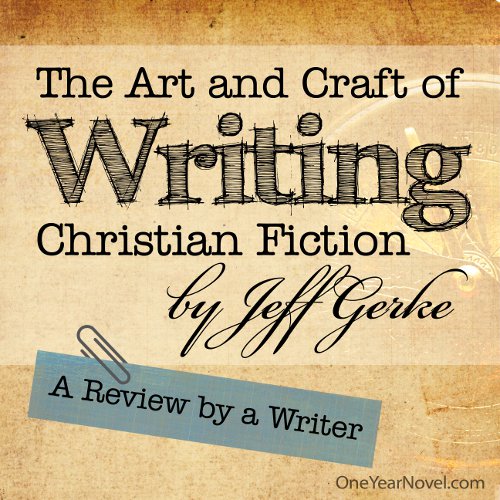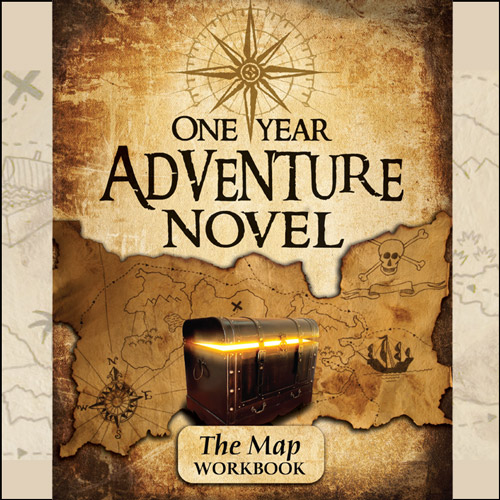A Young Writer’s Take on Jeff Gerke’s “The Art and Craft of Writing Christian Fiction”
Jeff Gerke, founder of Marcher Lord Press [renamed Enclave Publishing], the premier publisher of Christian speculative fiction, recently released The Art and Craft of Writing Christian Fiction. Here, Hannah Mills, a veteran student of The One Year Adventure Novel (OYAN) and our 2012 novel contest 2nd-place winner, shares her thoughts about the book, with special attention to how Gerke’s insights intersect with the fiction-writing structure taught in OYAN.
Hannah:
I’ve read a handful of writing books; The Art & Craft of Writing Christian Fiction stands out and shines.
Jeff’s style is conversational and informative, much like he is in person, whether speaking or talking one-on-one (I was very blessed to hang out with Jeff during several meals at the OYAN Summer Workshop).
I had to pace myself, otherwise I probably would have read the book in only two days’ time.
Divided into parts and then further into “Masteries” (instead of chapters), The Art & Craft covers everything from getting your heart in the right place before you begin your writing journey to beats, layering dialogue, and circularity.
It goes over most of what Daniel Schwabauer (“Mr. S.” to me!) covers in The Compass. Sometimes in more detail, sometimes in less. Jeff goes on to talk about other things as well, topics that Mr. S. either didn’t have the space to cover, or are more advanced techniques that would be overwhelming to a brand-new author.
 He orders the Masteries in a rough level of sequence and difficulty, with your attitude toward writing at the front, progressing through plot and characters, before getting into payoffs, realistic dialogue, and other higher-level topics.
He orders the Masteries in a rough level of sequence and difficulty, with your attitude toward writing at the front, progressing through plot and characters, before getting into payoffs, realistic dialogue, and other higher-level topics.
Now, on to details about the Masteries themselves.
Jeff provides a template for juggling more than two central characters without losing your reader: Spend so many pages with character X, then switch to Y for so many pages, then back to X, and then cycle to Z. Et cetera ad infinitum. I found this an incredibly helpful section to sticky-flag, and it also confirmed some of my own ideas on this topic, because his template is similar to what I did in a novel where I had three central characters.
Like Mr. S., Jeff emphasizes the importance of Show, don’t tell. “Don’t summarize, dramatize! Don’t narrate, illustrate!” is what he says, using the animated film WALL-E as an example of utilizing visual language. The restrictions we impose on ourselves when forcing ourselves to illustrate and dramatize make us better writers and push us to find more creative ways to use words.
A reader who understands something because you pound it into her with telling is going to feel like her brain has been turned off or numbed. It’s like listening to a parental lecture. In contrast, a reader who “catches on” to something in your story from the way two characters talk or who figures something out based on the awards on a character’s wall will feel engaged and energized. Which do you want your reader feeling?
– Mastery 25, pg. 160
I also really liked Mastery 30: When Can Readers Bear Exposition? Jeff delves into how and when it is appropriate to utilize information dumps, which is a balance I have never been sure about.
He says:
[There] are two conditions for including in the story what would otherwise be telling: the information must be required for the story to go forward, and the reader must be interested in hearing it.
(In another section, he also advocates telling in place of showing in instances of, for example, graphic violence.)
Then, to put it another way, Jeff compares showing and telling to a bank account. Your story is the interest account, showing makes up the deposits, and telling the withdrawals.
If you give readers zero deposits into their “interest account” on a given topic and then try to make a massive withdrawal (by making them listen to exposition on that topic, about which they have zero interest), you’ll be instantly overdrawn and you’ll get nasty letters from your banker. Or, in this case, you’ll get the disinterest of readers.
To make use of telling info dumps without boring readers, you first need to deposit into the account and build up interest. Then you can make a withdrawal—but be careful not to write too large a number on the check and wipe the account clean. I found this analogy to be very clear and helpful.
The entire book was educational and a pleasure to read. My copy is liberally sprinkled with sticky-flags. I received a good amount of confirmation about what I’m already doing correctly, and advice that will hopefully push me and my writing on to new heights.
I highly recommend this book for any fiction author, regardless of skill level. It is well worth the money and time.
A homeschool graduate, Hannah Mills joined OYAN four years ago and since then has written five novels, including Hosanna House. Her goals are to study graphic design and tell compelling, well-written fiction containing Truth. When she isn’t writing, Hannah enjoys spending time with friends and family, networking with other writers, creating some form of art, or curling up with a good book and a cup of coffee.
* Please note that links on The One Year Adventure Novel Blog to other websites and blogs do not constitute an official endorsement. We are not intimately familiar with all the writing and opinions contained in outside links.






Great post Hannah! I’ll have to check this book out for myself. Writing is a form of art too, and the way in which individuals put words onto a page is just as inspiring and creative as any other art form.